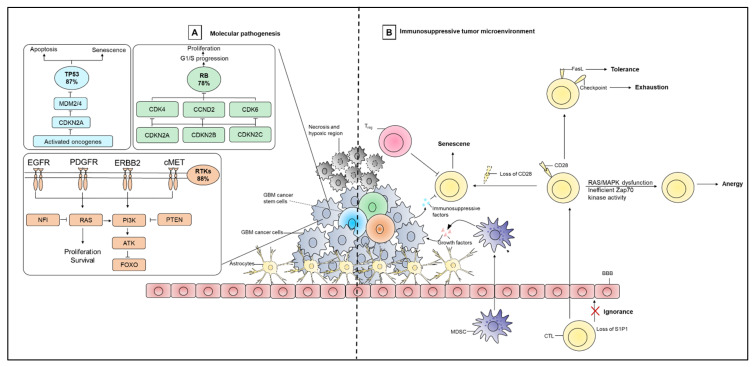Figure 1.
Characteristics of the GBM tumor microenvironment. (A) Three dominant molecular alterations in GBM include P53, retinoblastoma (Rb), and receptor tyrosine kinase (RTK) signaling pathways and their corresponding frequencies in GBM. (B) The GBM tumor microenvironment (TME) is immunosuppressed mainly due to presence of dysfunctional T cells and myeloid-derived suppressor cells (MDSCs). T cell dysfunction results from different mechanisms that involve senescence, tolerance, anergy, exhaustion, and ignorance. T cells senescence is associated with loss of the co-stimulator CD28, which may occur as a result of telomere damage, presence of Tregs, or TME metabolic stress. Tolerance of T cells is mediated by FasL-induced apoptosis, recruitment of Tregs, and upregulation of factors that limit T cell effector functions. T cell anergy occurs due to RAS/MAPK dysfunction or inefficient Zap70 kinase activity. Co-expression of immune checkpoint molecules such as PD-1, LAG-3 and TIM-3 are also important contributors to T cell exhaustion in GBM. The loss of sphingsosine-1-phosphate receptor 1 (S1P1) is associated with T cell ignorance. MDSCs release immunosuppressive growth factors and other mediators to support growth of cancer cells. Cancer cells can also secret a number of immunosuppressive factors to maintain their overall survival.

